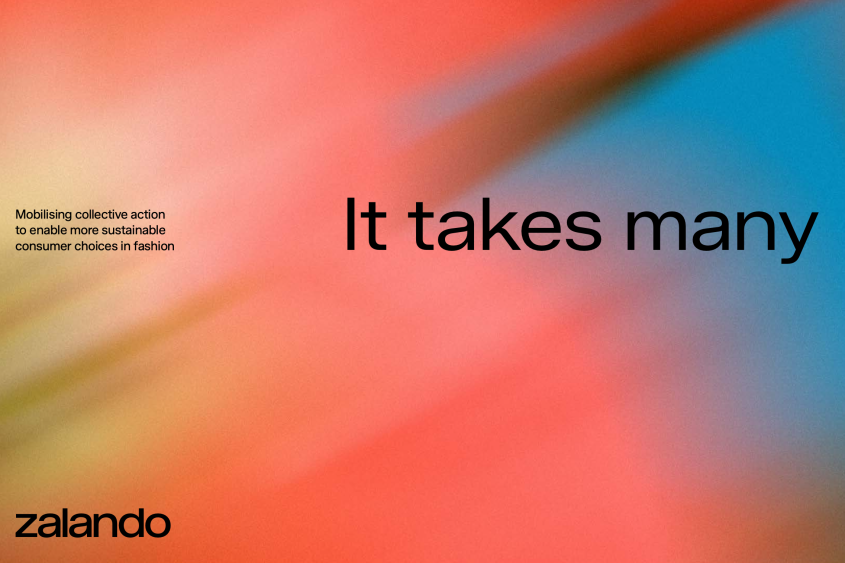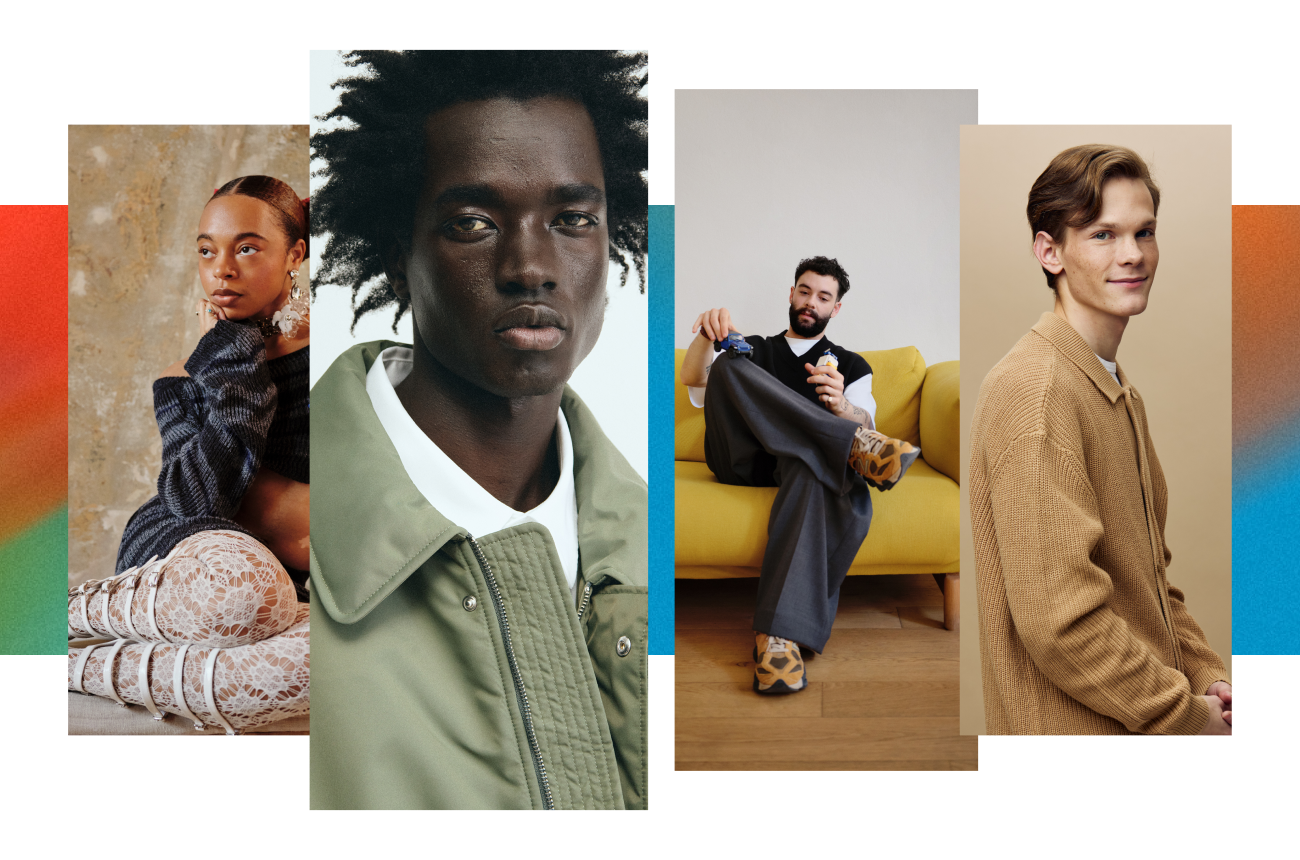Zalando publishes updated sustainability attitude behaviour-gap report
Zalando publishes updated sustainability attitude behaviour-gap report

In 2021, we published our 'It takes two' report, shedding light on the disconnect between consumers’ intentions to embrace more sustainable fashion habits and their actions. Faced with this “attitude-behaviour gap,” we highlighted the need for a joint effort by industry and consumers to bridge the gap regarding more sustainable fashion. Since then, we have worked on applying these learnings, continued to focus on offering quality assortments and experiences that align with our values and support more responsible choices for our customers (e.g. detailed filter options for key impact areas, expanding our more sustainable assortment, providing educational content), and strengthened our collaboration with brands to increase the availability of more sustainable options.
In the last four years, however, our world has changed profoundly.
Based on our unwavering belief that listening and learning are the best ways to keep getting better, we have set out to update our initial research to understand, in this new context, what’s preventing consumers from making more sustainable fashion choices and what’s needed to bridge the gap now.
At Zalando, we know that our customers are passionate about expressing themselves through style and seek to balance their love for fashion with a desire to make more conscious choices. As this new report shows, their aspirations for more sustainable fashion remain strong, but many barriers still stand in their way. Retailers, brands, policymakers, and others need to come together to address systemic barriers and help meet consumers where they are, with the very needs and aspirations they have.
Change cannot be the work of a few. It requires collective action. It takes many.


It takes many - Attitude Behaviour Gap Report 2025
(pdf, 2.74 MB)
Explore our main findings, a proposed roadmap for collective action and our conclusions

Beyond the gap: unpacking barriers to consumer aspirations
Consumers report being aware of more sustainable fashion, and many are already making intentional choices in this area. However, the attitude-behaviour gap persists: consumers continue to aspire to make more sustainable fashion choices in the future, with more than seven in ten consumers wanting to be more sustainable in what they buy (71%) and how they wear it (74%).
The three key takeaways:
- Strong foundations and aspirations: Nearly two-thirds (62%) of consumers say they know about more sustainable fashion and 66 percent are already making fashion choices with sustainability in mind. A vast majority expresses aspirations to do more in the future, whether in purchasing (71%) or wearing (74%) more sustainably
- Aspirations vs actions: This willingness to do more in the future reflects a high level of consumer aspiration, but also underscores a persistent attitude–behaviour gap, with many still struggling to act on their intentions today. While we did not fully track this attitude–behaviour gap compared to 2021, directional insights suggest that some behaviours are shifting. While consumers report that they are increasingly buying secondhand, repairing garments, checking product labels, and responsibly disposing of clothing, other gaps persist, or have even widened, particularly when it comes to checking brands’ environmental practices or labour policies.
- Barriers: Higher prices remain the single biggest obstacle for 41 percent of consumers who aspire to make more sustainable purchasing or wearing decisions. Other common barriers include difficulty in identifying more sustainable fashion items (27%), not knowing where to find them (24%), and a general lack of knowledge on how to make more sustainable choices (21%). These challenges are further complicated by recent EU legislation and anticipated delegated acts that make it harder for brands and retailers to communicate about sustainability. This presents a key challenge, as additional analysis shows that limited access to guidance and transparency – along with price premiums – continues to prevent consumers from realising their aspirations.

It takes many: a call for collective action
Consumers and industry experts agree: the responsibility for enabling more sustainable consumer choices in fashion must be shared.
The three key takeaways:
- Shared responsibility: Consumers see more sustainable fashion as a collective responsibility. Over seven in ten believe that both brands and retailers (77%) and individuals like themselves (72%) should support them in making more sustainable fashion choices. But consumers also look to a wider range of other actors to contribute, including the European Union (66%) and national governments (63%), social media platforms (65%) and influencers (61%), international organisations (63%), and nongovernmental organisations (60%).
- Clear roles and expectations: Consumers and industry experts have clear expectations regarding the role of various stakeholders in promoting more sustainable fashion. This includes retailers and brands making more sustainable fashion the default choice and supporting consumers through every stage of their journey.
Additionally, national governments and the EU are expected to reduce taxes on more sustainable fashion, invest in supporting infrastructure, implement simplified labelling systems, and allow brands and retailers to communicate about more sustainable fashion. Social media platforms and influencers are likewise crucial in driving momentum for more sustainable fashion, shifting the focus away from constantly new, but short-lived fashion items.
- A system change effort: Bridging the gap between consumers’ intentions and actions requires aligned efforts from all stakeholders in the entire fashion ecosystem. It takes many, not just two.

What’s next with consumers? Taking a more consumer-centric approach
To enable more sustainable consumer choices in fashion, all actors must meet consumers where they are, not where we assume or wish them to be. Consumers are diverse in their motivations and behaviours – our segmentation identifies four groups among the consumers we interviewed that can be more effectively engaged through a deeper understanding of their drivers, challenges, and sources of inspiration.
The three key takeaways:
- Various motivations and challenges: Consumers recognise their own role in driving positive change, but they are not a single, uniform group. Their motivations, sources of inspiration, and barriers related to more sustainable fashion vary widely, from seeking deals and expressing their personality to filling gaps in their wardrobe or aligning with their values.
- Meeting consumers where they are: Effectively enabling consumers to make more sustainable fashion choices means engaging with these diverse motivations and challenges. It means, for all actors of the fashion ecosystem, meeting consumers exactly where they are, not where we assume they should be.
- Four different consumer segments unveiled: Our research uncovers four distinct consumer segments that reveal this diversity: Fashion First (prioritising style and trends, representing 37% of consumers interviewed), Conscious Curators (trying to balance fashion and sustainability, 21%), Mindful Minimalists (believing that less truly is more, 23%), and Indifferents (not engaged in fashion and sustainability, 18%).

How each actor across the system can contribute
To drive real progress, a concerted and multifaceted effort is needed, bringing together industry players, policymakers, social media platforms, influencers, and other key stakeholders.
Crucially, this effort must aim to support and enable consumers, rather than placing the burden solely on them. Through our quantitative survey and follow-up qualitative interviews, we explored what consumers expect from each of these actors.
We also invited industry experts to share their perspectives and ideas. Drawing on these insights, we present below and on the next pages what we hope can serve as an initial collective roadmap for change.
Retailers and brands
- Make more sustainable fashion the default choice and highlight value to consumers
- Support consumers all along their journey - not just at the point of sale
- Normalise second-hand shopping
- Harnessing the fashion industry’s creativity to appeal to both the “head” and the “heart”
- From volume to value
The EU and national governments
- Set the right conditions to make more sustainable fashion mainstream and accessible
- Develop a simplified sustainability label or eco-score for fashion products
- Beyond labelling, allowing retailers and brands to communicate about more sustainable fashion
- Enable access to better data is key to accelerate sustainability progress
- Continue to engage at the international level to advance global standards
Social media platforms and influencers
- Make sustainability socially acceptable - and stylish
- Shifting followers from fashion quantity to quality
- Unboxing? Make it mean something
Conclusion
Four years after our inaugural 'It takes two' report on the attitude–behaviour gap, we felt compelled to delve deeper and move beyond this persistent disconnect.
The research in this report reveals that more than seven in ten fashion consumers aspire to make more sustainable purchasing (71%) and wearing decisions (74%), but face key barriers in realising these aspirations.
Behaviour change happens when three things are in place: capability, opportunity, and motivation – the core components of the COM-B model, a widely used behavioural framework developed by psychologist Susan Michie and colleagues at University College London. According to this model, enabling more sustainable consumer choices in fashion requires giving people the ability, the opportunity, and the desire to act – and all three are essential for lasting impact.
Our research points to key avenues to unlock change at these three levels:
Build consumers’ capabilities by closing information and guidance gaps: While many consumers are aware of sustainable fashion and are already taking action in key areas, a lack of clear and accessible information and guidance still hinders their ability to consistently act on their values. This is a challenge further complicated by a shifting and uncertain regulatory environment that makes it more difficult for brands and retailers to communicate clearly about sustainability.
Make the opportunities for sustainable choices more visible, accessible, and affordable by working with multiple actors across the fashion ecosystem: This requires aligning a broad range of actors – including brands, retailers, national governments and the EU, social media platforms, influencers, and civil society – to remove the practical and structural barriers that currently limit consumer action and our collective ability to unlock it.
Tap into and nurture motivation, recognising that consumers are not a monolith: A more consumer-centric approach means engaging with their diverse values, aspirations, and behaviours, not where we hope they are, but where they truly are. From the trend-focused Fashion First to the Conscious Curators who try to balance fashion and sustainability, tailored strategies are needed to resonate with the motivations of each group.
Enabling sustainable behaviour is not up to consumers alone. It is a shared responsibility that demands coordinated, sustained action across the entire fashion value chain. Only by acting together – and through a more targeted understanding of behaviour and what is needed to unlock it – can we begin to bridge the gap between intention and impact, and enable more sustainable consumer choices in fashion. It takes many, but collective action can enable us to unlock better value for business and society.
We invite everyone to engage in conversation, debate, and collaboration with stakeholders across the fashion ecosystem to help make this vision a reality. To turn these research insights into action, we will host a series of events and engagements in the coming months, involving all those who would like to contribute to this change.
If you have any questions, please reach out to your usual Zalando contact or email us at: sustainability@zalando.de
Our hunt for insights does not stop here
To gain a deeper understanding of Zalando customers’ fashion and sustainability expectations and behaviours, we are conducting additional analysis using this research.
We administered the same set of questions from the online quantitative questionnaire to a group of Zalando customers through our Zalando Voices panel1. By comparing these survey responses with these customers’ actual shopping and purchasing behaviours on our online store, we aim to gain greater insights into their behaviours, challenges, and key barriers.
Aligning survey responses with real-world behaviour data will enhance the robustness of this study. This approach will help us identify crucial moments in the customer journey when customers engage with sustainability or require more support from us or other actors of the fashion ecosystem.
1 Our Zalando Voices Panel is a group of customers who are regularly invited to participate in surveys where they can voluntarily share their opinions and experiences on various topics related to Zalando. This feedback helps us to continuously improve our products, services, and shopping experience.

